Genetically modified organisms are plants, animals, or microorganisms genetically engineered by inserting, deleting, or modifying specific genes. GMOs have become increasingly prevalent in modern agriculture as a way to improve crop yields, resist pests and diseases, and reduce the use of pesticides and herbicides.
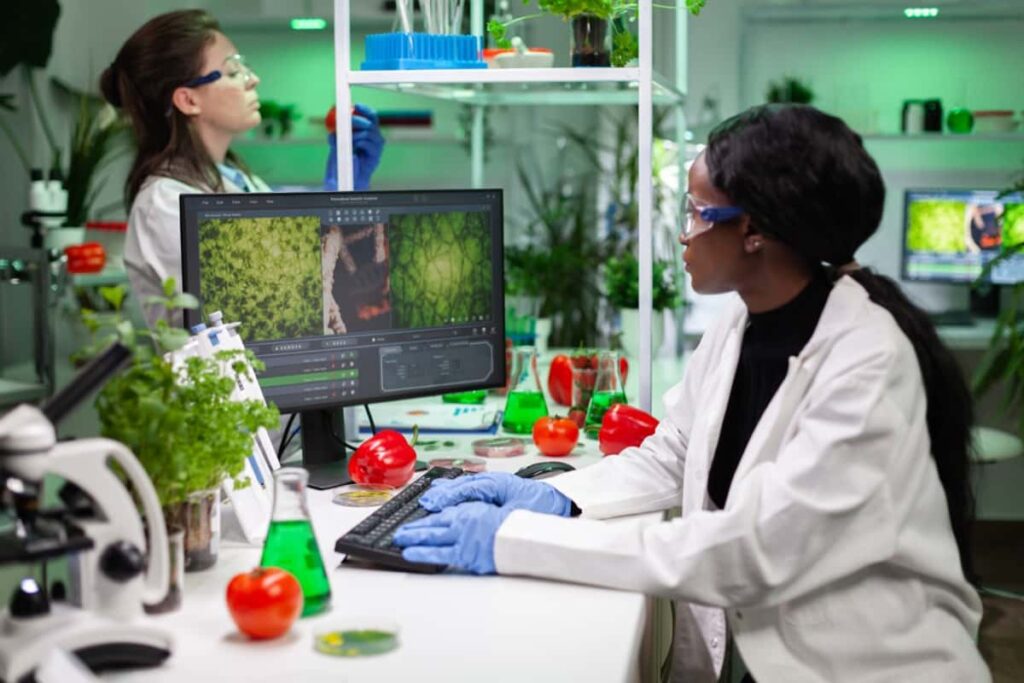
GMOs are organisms with DNA that have been modified using genetic engineering techniques. GMO crops have had genes introduced to them in the food sector for various reasons, including improved growth, nutritional value, sustainability, pest resistance, and ease of cultivation. This process is faster than natural selective breeding, which can take many generations. Scientists can more easily identify which genetic change led to the new trait.
In this blog article post, we will explore the basics of GMOs, why they are used in agriculture, and the benefits they can bring to modern farming practices. From increasing crop productivity to reducing the environmental impact of farming, GMOs have the potential to play an important role in feeding the world’s growing population.
Genetically Modified Organisms in Agriculture
What are GMOs?
GMOs are genetically modified organisms, living entities that have had their genetic composition altered without impairing their natural function. GMOs are genetically modified organisms whose genetic material has been altered via recombinant DNA technology or gene therapy.” GMO stands for “genetically modified organism,” meaning something in an organism’s genome (plant, animal, or microbe) has been changed or transformed.
Plant breeding is a concept that has been introduced previously to us. We are aware of the economic significance of plants. However, the adaptability of breeding techniques has increased during the previous century. Plant hybridization has improved significantly since developing many sophisticated genetics and genomics approaches.
What is the purpose of GMOs?
The primary purpose of GMOs is to introduce specific traits or characteristics into an organism that would not naturally occur. It can include increased resistance to pests and diseases, improved nutritional content, longer shelf life, and the ability to grow in harsher conditions. In the agriculture industry, using GMOs can increase crop yields, reduce the need for pesticides and herbicides, and improve food security.
In case you missed it: The Importance of Soil Health in Farming: Role of Soil in Sustainable Agriculture
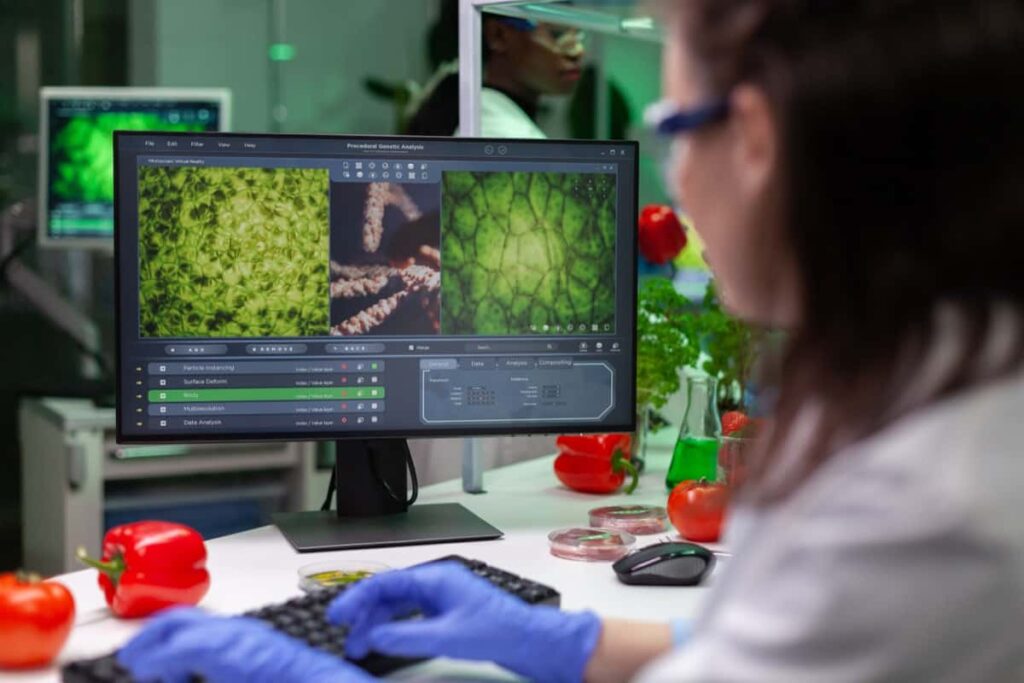
GMOs are also used in research and medical fields to create organisms that can be used for specific purposes, such as producing insulin or other drugs. In addition, the industry uses GMOs to produce enzymes, chemicals, vaccines, and other products used in different applications, such as food and feed production, medicine, and biotechnology. GMOs are also used to create new organisms, such as bacteria and yeast, that are used to produce biofuels and to develop new medical treatments.
What is the process of GMOs?
The process of creating GMOs involves several steps: selecting a donor and recipient species, isolating the gene of interest from the donor, inserting the gene into the recipient organism using a vector such as a plasmid, validating the insert through techniques such as DNA sequencing and biochemical tests, and performing field trials and testing before commercialization.
The most popular method for gene transfer is plasmid DNA-mediated gene transfer, which is known for its high efficiency, accuracy, and transfection capabilities. Genetic modification can be done in various ways, such as inserting a gene from other organisms to introduce a new trait, removing a gene to suppress its function, replacing a faulty gene with a healthy one to improve normal function, and replacing a whole genome with a new one to create a new variety.
Process of creating GMOs involves several steps:
- Selection of donor and recipient species: The first step in creating a GMO is to select the donor and recipient species. The donor species is the organism from which the gene of interest will be taken, and the recipient species is the organism into which the gene will be inserted.
- Isolation of the gene of interest: Once the donor and recipient species are selected, the gene of interest is isolated from the donor using techniques such as PCR, restriction enzyme digestion, and cloning.
- Insertion of the gene into a vector: The isolated gene is then inserted into a small piece of DNA that can carry the gene into the recipient organism. The most commonly used vectors are plasmids, small circular DNA molecules in bacteria.
- Transfer of the vector into the recipient organism: The vector containing the gene of interest is then transferred into the recipient organism using methods such as electroporation, particle bombardment, or Agrobacterium-mediated transformation.
- Validation of the insert: Once the gene has been inserted into the recipient organism, the insert is validated to ensure it has been incorporated into the organism’s genome. It can be done using PCR, DNA sequencing, and Southern blotting techniques.
- Tissue culture: The transformed cells are then cultured in tissue culture to generate new plants from a few cells.
- Field trials and testing: The newly constructed plant species undergo several testing before commercialization. For example, DNA sequencing is done to find the insert, and other biochemical tests are also done to understand the function of a new gene.
- Release of the GMO: The GMO organism is released for commercial use after successful testing and field trials.
In case you missed it: Blockchain Technology in Agriculture: A Way to Future Sustainability and Role in Supply Chain
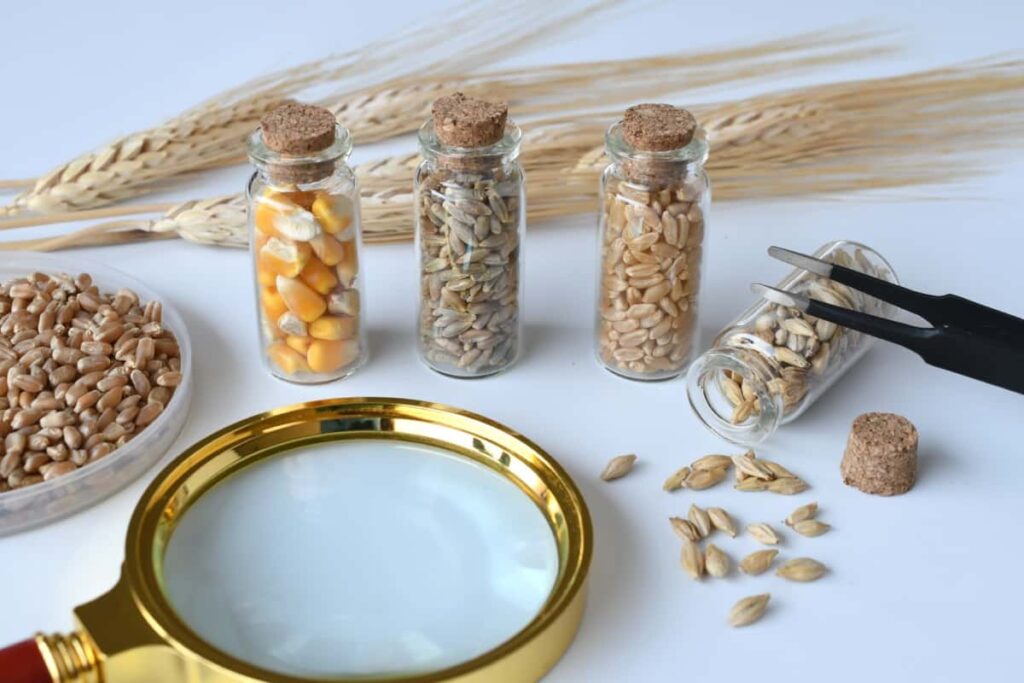
Practical applications of GMOs
GMOs are used in various applications, such as agriculture and plant biotechnology, the production of therapeutic drugs and molecules, bioplastics and biofuels, and gene therapy experiments. In agriculture, GMOs create plants resistant to pests, diseases, and other environmental stressors and increase crops’ quality, yield, and nutritional value.
In biotechnology and medicine, GMOs are used to create transgenic animals for studying the effects of genes on human health and to produce therapeutic drugs, proteins, hormones, and other biomolecules. Some examples of GMOs include pesticide, herbicidal, drought-resistant, insect-resistant plants, disease-resistant plants, biodegradable and fuel-producing bacteria, and transgenic animals.
Examples of GMOs
Bt-cotton
It is a genetically modified cotton plant that has been altered to have insect-resistance capacity. It is created by isolating a Cry gene from the bacterial Bacillus thuringiensis and inserting it into the cotton genome. The transgene is expressed in the host plant when it is ingested by the bollworm, causing the worm’s death. It is due to the protein expressed by the Cry gene, which dissolves the gut lining of the worms. This process allows the Bt-cotton to fight against bollworm attacks, one of the most important pests that cause damage to cotton plants.
Flavr Savr tomato
It is a well-known example of a GMO. It was developed to address the problem of bulk transportation of tomatoes. Natural tomatoes tend to spoil quickly during transportation. The Flavr Savr tomato was created using antisense RNA technology, which prevents the softening of fruits. It is achieved by creating an antisense RNA for the polygalacturonase enzyme responsible for inducing fruit ripening. The Flavr Savr tomato prevents softening by inactivating this enzyme and makes transportation easier.
E.coli bacterium
It is commonly used in the production of Therapeutic proteins through genetic engineering. In 1978, Herbert and Boyer developed an artificial insulin protein by inserting the gene for insulin into the E.coli genome. These genetically modified bacteria produce insulin as a byproduct used to treat diabetes. Similarly, in 1985, the human growth hormone was produced artificially by inserting the gene for growth hormone in E.coli.
Recombinant vaccines
These are also created using genetic engineering techniques. They can be divided into two categories: DNA vaccines and recombinant proteins. Bacteria, yeast, insects, and mammals are used to develop and produce recombinant vaccines. An example is the vaccine against the Hepatitis B virus, which was developed using the genetically modified yeast Saccharomyces cerevisiae. The yeast genome is modified to produce a vaccine based on the hepatitis B surface antigen, which is used to prevent hepatitis B.
In case you missed it: 12 Best Agriculture Business Ideas in the USA: A Beginners Guide for Making Profits
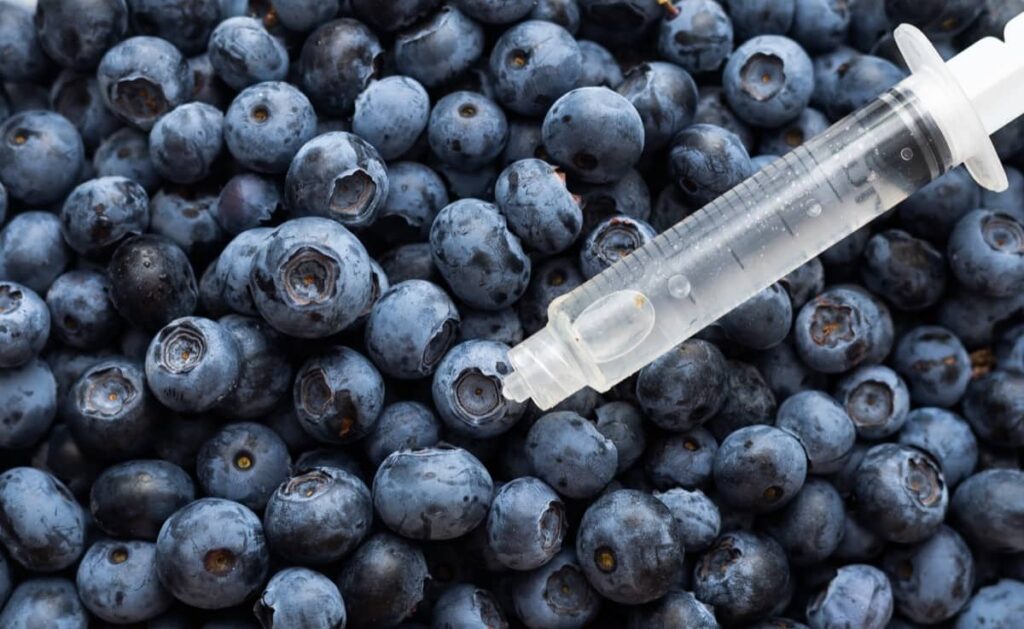
Golden rice
It is a well-known example of a GMO. It is a genetically modified rice variety developed to overcome vitamin A deficiency. The rice is genetically modified to produce more beta-carotene, converted into vitamin A when consumed by humans. To achieve this, two genes are inserted into the rice’s genome, one from the plant that encodes phytoene synthase and one from a bacteria that encodes phytoene desaturase. It leads to increased production of beta-carotene in the rice grains, with the amount increasing by 23 times compared to regular rice.
Microbes usually utilized in GMO construction
- Bacteria: Escherichia coli (E. coli) is one of the most widely used bacteria in GMO construction due to its ability to take up and replicate plasmid DNA quickly. Other bacteria commonly used in GMO construction include Streptococcus pneumoniae, Bacillus subtilis, and Lactococcus lactis.
- Yeast: Saccharomyces cerevisiae (baker’s yeast) is commonly used in GMO construction because it produces recombinant proteins efficiently. Other yeast species used in GMO construction include Pichia pastoris and Candida albicans.
- Fungi: Aspergillus niger is a commonly used fungus in GMO construction due to its ability to produce many enzymes and other valuable compounds. Other fungi used in GMO construction include Trichoderma reesei and Fusarium oxysporum.
- Insects: Baculoviruses are commonly used in the GMO construction of insects, especially in creating recombinant proteins.
- Plants: Agrobacterium tumefaciens is commonly used in plant genetic engineering as a vector to introduce new DNA into plants.
Difference between GMOs and IPRs
GMO stands for “genetically modified organism.” These are organisms whose genetic material has been altered in a way that does not occur naturally through mating or natural recombination. GMOs are used in agriculture to create crops resistant to pests and diseases, have improved nutritional content, or have other desirable traits.
IPRs stands for “intellectual property rights.” These legal rights protect the creators of certain types of intellectual property, such as patents, trademarks, and copyrights. In the context of GMOs, IPRs may be used to protect the rights of companies or individuals who have developed new genetic modifications or plant varieties. It can include patenting specific genes or genetic sequences and trademarking specific names for genetically modified crops.
Advantages of GMOs
GMOs have several potential benefits for agriculture and food production. One of the main advantages of GMOs is that they can increase crop yields and reduce the use of pesticides. GMOs are often engineered to be resistant to pests and diseases, so farmers can use fewer pesticides and still achieve good crop yields. GMOs can also be designed to tolerate environmental stressors, such as drought or high temperatures, which can help increase crop yields.
Another benefit of GMOs is that they can improve the nutritional content of food. For example, scientists have developed genetically modified rice with higher levels of Vitamin A, which is essential for maintaining good vision and a healthy immune system. It can be especially beneficial in regions where vitamin A deficiency is a significant public health concern.
GMOs can also be used to create new plant varieties that can be grown in regions where they would not usually be able to thrive. It can help increase food availability and improve food security in areas prone to crop failures or food shortages. In addition to these benefits, GMOs can also help reduce agriculture’s environmental impact. It is because GMOs can be designed to reduce water, fertilizer, and other resources, which can help conserve resources and reduce the environmental footprint of food production.
In case you missed it: Agriculture in Uganda: Types, Importance, Crops, and Statistics
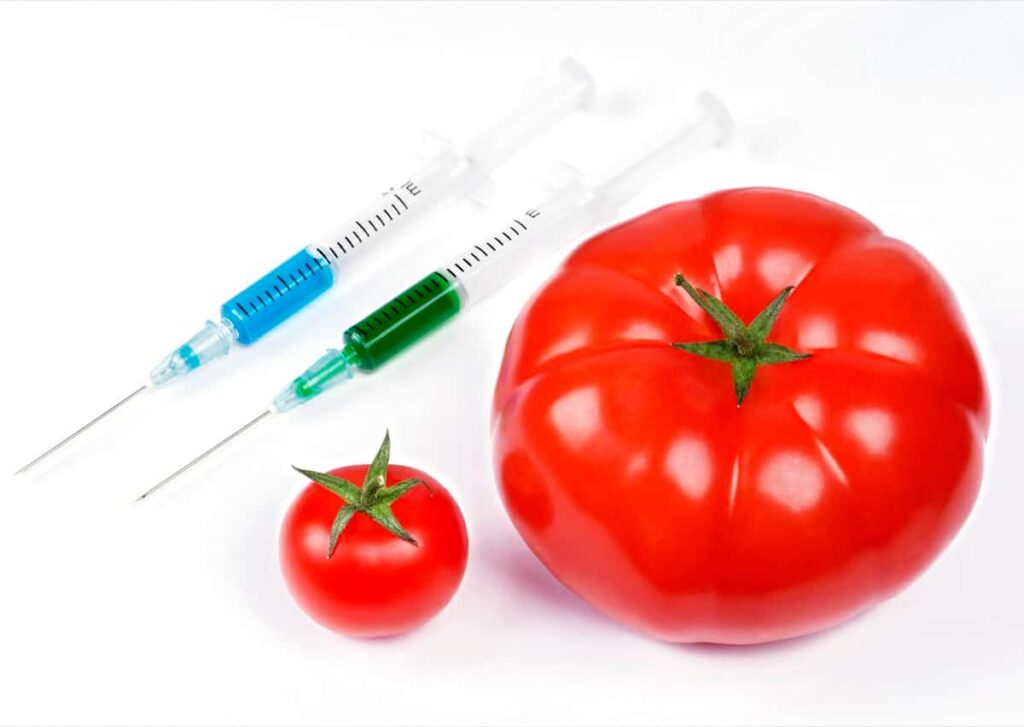
Disadvantages of GMOs
One potential disadvantage of GMOs is that they can negatively affect the environment. For example, the widespread use of genetically modified crops resistant to herbicides can lead to increased use of these chemicals, harming other plants and animals. Additionally, the overuse of these crops can lead to the emergence of “superweeds” resistant to herbicides. Another potential disadvantage is that GMOs can have adverse effects on human health. There is still much debate and ongoing research on this topic.
Still, some studies have suggested that consuming genetically modified foods may increase the risk of specific health problems. Another disadvantage is that GMOs can lead to decreased biodiversity. Because genetically modified crops are often designed to be resistant to pests and diseases, they can outcompete and displace other plants and animals, reducing the overall diversity of ecosystems. GMOs can also have adverse economic effects, particularly for small farmers.
For example, the development and widespread use of genetically modified crops can decrease demand for non-genetically modified seeds, harming the livelihoods of farmers who rely on selling these seeds. Another concern is that GMOs could lead to a loss of control over food production by large corporations holding patents on genetically modified seeds that can exercise control over farmers by setting prices and conditions of use and even suing farmers who save and replant patented seeds.
GMO use in the Future
GMOs are organisms whose genetic material has been altered in a way that does not occur naturally through mating or natural recombination. They are used in agriculture to create crops resistant to pests and diseases, have improved nutritional content, or have other desirable traits.
While there are potential drawbacks to using GMOs, such as adverse effects on the environment, human health, biodiversity, and the livelihoods of small farmers, there are also many benefits that make them an essential tool in modern farming. One of the critical benefits of GMOs is that they can increase crop yields and reduce the need for pesticides and herbicides. It can lead to more efficient and sustainable farming practices and lower costs for farmers.
GMOs can also be used to create more resistant crops to extreme weather conditions, such as drought or flooding, which can be particularly useful in regions prone to these types of weather events. Another benefit of GMOs is that they can be used to improve the nutritional content of crops. For example, genetically modified rice with higher levels of vitamin A can help reduce vitamin A deficiency in developing countries, which is a significant public health problem.
In case you missed it: Crop Insurance Role in Driving Smart Digital Agriculture in Africa.
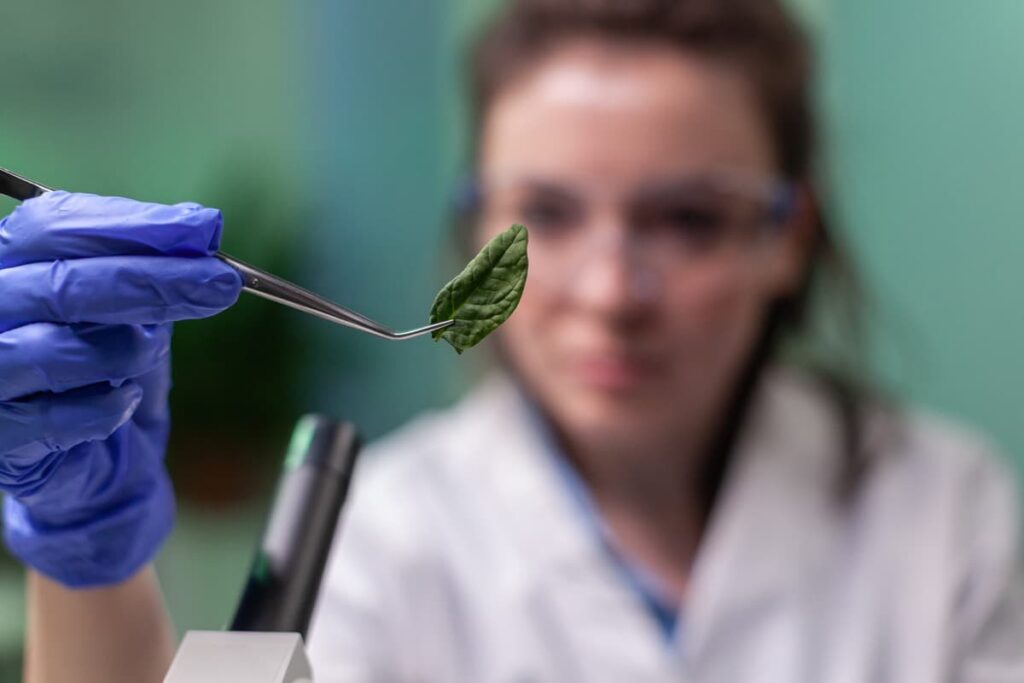
Conclusion
GMOs are an essential tool in modern agriculture that can help to increase crop yields, reduce the need for pesticides and herbicides, improve the nutritional content of crops, and help farmers to adapt to changing weather conditions. While there are potential drawbacks, weighing the benefits and drawbacks of GMOs to make informed decisions about their use in agriculture is essential.
- Management Pests and Diseases in Your Cotton Field
- Sheep Farming Business Plan for Beginners
- Aquaponic Farming at Home: A Step-By-Step Guide
- Profitable Village Farming Business Ideas in 2024
- High-Yield Aquaculture: Fast-Growing Fish for Farming
- Effective Fish Pond Construction Techniques for Beginners
- Irrigation and Water Management in Pineapple Farming
- Blossom to Harvest: Mastering Flowering and Pollination in Papaya Farming
- Pig Fattening Essentials: From Selection to Sale for Beginners
- Raising Wagyu Cattle: A Complete Guide for Premium Beef Production
- Soil Types and Their Water Holding Capacity
- Optimizing Irrigation Schedules for Coconut Groves for Enhanced Yield
- Espresso Your Garden: Coffee Grounds for Healthier Acid-Loving Plants
- The Best Soil Mix for Snake Plants: How to Mix Your Own Snake Plant Soil
- Green Thumb Success: Expert Tips for Cultivating Greenhouse Beans All Year Round
- Bloom All Year Round: The Ultimate Guide to Indoor Hyacinth Care
- Eco-Friendly Gardening: How to Make Liquid Fertilizer from Kitchen Waste
- Ultimate Guide to Grow Anise in Pots: Explore Seed Propagation to Harvesting
- Guide to Raising Chester White Pigs: Discover Breed Facts to Growth Management
- Mastering the Elegance: The Ultimate Guide to Weeping Cherry Tree Care, Planting, and Maintenance
- Ultimate Guide to Planting Garlic in Grow Bags: Growing Strategies for Beginners
- How to Fix Spider Plant Leaf-Related Problems: Natural and Organic Remedies
- 10 Reasons Why Your Tulsi Plant is Shedding Leaves: Home Remedies and Solutions
- Optimizing Growth and Yield: The Advantages of Palm Bunch Ash Fertilizer
- Utilizing Neem Oil Extract as a Natural Pesticide for Hydrangea
- From Soil to Harvest: Various Ways in Which Farmers Can Use AI Tools
- Steps to Encourage and Induce Citrus Flowers: A Comprehensive Guide
- How to Fix Snake Plant Leaf-Related Issues: Natural and Organic Remedies
- Transform Your Garden into a Fragrant Oasis with Raat Ki Rani (Night Blooming Jasmine)
- Discover the Ideal Chicken Breeds for Philippine Farms
- How to Create a Poultry Egg Farm Business Plan for Profits
- Grow Lemon Cucumbers Like a Pro: Insider Techniques for Bountiful Yields
- Ultimate Guide to Caring for Your Pink Princess Philodendron: Tips for Thriving Variegation
- Areca Nut Profit Per Acre: Calculating Yield and Cost of Cultivation
- How Kaveri Chicken is Becoming a More Profitable Breed in Indian Backyards
- Transform Your Barn: 9 Steps to Convert a Horse Stall into a Chicken Coop
